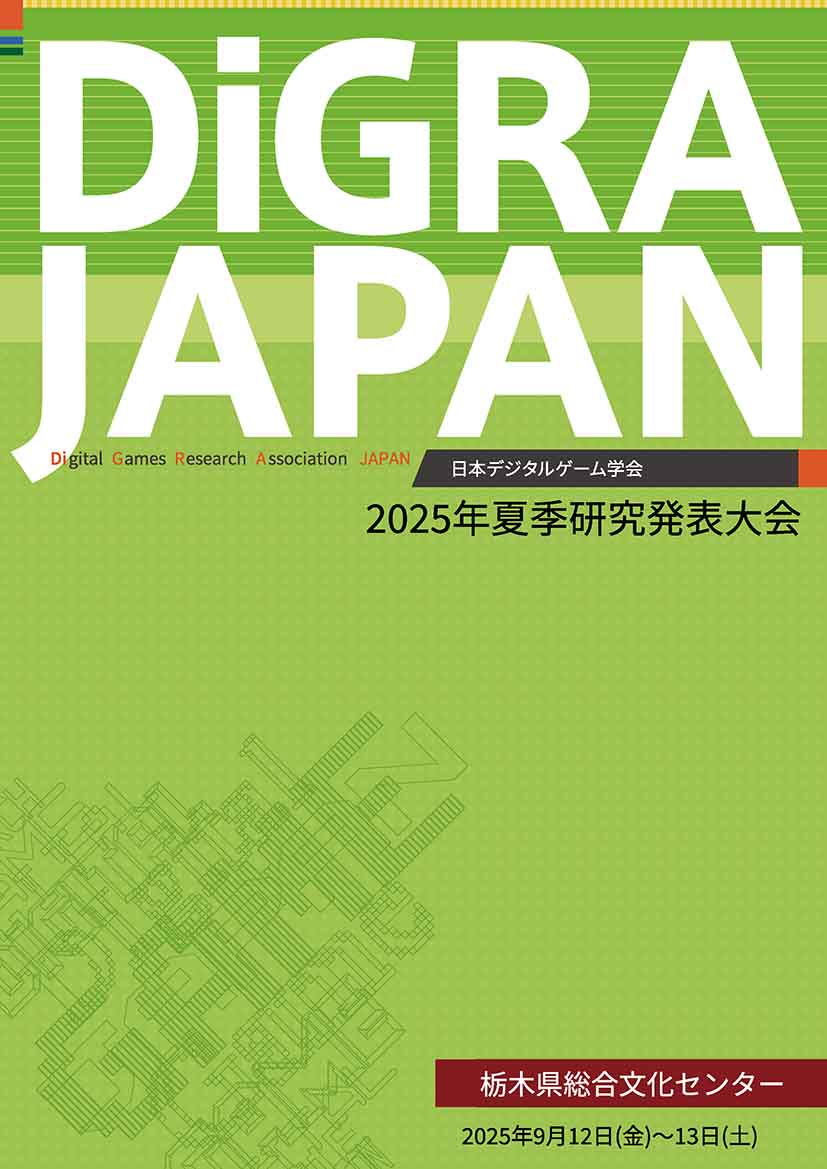Current issue
Displaying 1-50 of 70 articles from this issue
Front matter
-
Pages 1-
Published: 2025
Released on J-STAGE: October 20, 2025
Download PDF (21K) -
Pages 2-5
Published: 2025
Released on J-STAGE: October 20, 2025
Download PDF (793K)
Keynote
-
Pages 7-
Published: 2025
Released on J-STAGE: October 20, 2025
Download PDF (121K)
-
Pages 9-14
Published: 2025
Released on J-STAGE: October 20, 2025
Download PDF (1425K) -
Pages 15-20
Published: 2025
Released on J-STAGE: October 20, 2025
Download PDF (1943K) -
Pages 21-26
Published: 2025
Released on J-STAGE: October 20, 2025
Download PDF (1781K) -
Pages 27-30
Published: 2025
Released on J-STAGE: October 20, 2025
Download PDF (1997K)
-
Pages 31-36
Published: 2025
Released on J-STAGE: October 20, 2025
Download PDF (1386K) -
Pages 37-39
Published: 2025
Released on J-STAGE: October 20, 2025
Download PDF (694K) -
Pages 40-43
Published: 2025
Released on J-STAGE: October 20, 2025
Download PDF (1317K)
-
Pages 44-49
Published: 2025
Released on J-STAGE: October 20, 2025
Download PDF (1816K) -
Pages 50-54
Published: 2025
Released on J-STAGE: October 20, 2025
Download PDF (1358K) -
Pages 55-59
Published: 2025
Released on J-STAGE: October 20, 2025
Download PDF (1325K)
-
Pages 60-62
Published: 2025
Released on J-STAGE: October 20, 2025
Download PDF (694K) -
Pages 63-68
Published: 2025
Released on J-STAGE: October 20, 2025
Download PDF (3091K) -
Pages 69-74
Published: 2025
Released on J-STAGE: October 20, 2025
Download PDF (1599K) -
Pages 75-78
Published: 2025
Released on J-STAGE: October 20, 2025
Download PDF (987K)
-
Pages 79-84
Published: 2025
Released on J-STAGE: October 20, 2025
Download PDF (4079K) -
Pages 85-89
Published: 2025
Released on J-STAGE: October 20, 2025
Download PDF (1876K) -
Pages 90-94
Published: 2025
Released on J-STAGE: October 20, 2025
Download PDF (1693K) -
Pages 95-96
Published: 2025
Released on J-STAGE: October 20, 2025
Download PDF (466K)
-
Pages 97-100
Published: 2025
Released on J-STAGE: October 20, 2025
Download PDF (1913K) -
Pages 101-104
Published: 2025
Released on J-STAGE: October 20, 2025
Download PDF (1311K) -
Pages 105-106
Published: 2025
Released on J-STAGE: October 20, 2025
Download PDF (337K) -
Pages 107-112
Published: 2025
Released on J-STAGE: October 20, 2025
Download PDF (2721K)
-
Pages 113-118
Published: 2025
Released on J-STAGE: October 20, 2025
Download PDF (1683K) -
Pages 119-124
Published: 2025
Released on J-STAGE: October 20, 2025
Download PDF (2411K) -
Pages 125-130
Published: 2025
Released on J-STAGE: October 20, 2025
Download PDF (2367K) -
Pages 131-134
Published: 2025
Released on J-STAGE: October 20, 2025
Download PDF (1000K)
-
Pages 135-138
Published: 2025
Released on J-STAGE: October 20, 2025
Download PDF (1399K) -
Pages 139-143
Published: 2025
Released on J-STAGE: October 20, 2025
Download PDF (1371K) -
Pages 144-149
Published: 2025
Released on J-STAGE: October 20, 2025
Download PDF (1675K)
-
Pages 150-153
Published: 2025
Released on J-STAGE: October 20, 2025
Download PDF (1130K) -
Pages 154-159
Published: 2025
Released on J-STAGE: October 20, 2025
Download PDF (1498K) -
Pages 160-165
Published: 2025
Released on J-STAGE: October 20, 2025
Download PDF (1742K)
-
Pages 166-169
Published: 2025
Released on J-STAGE: October 20, 2025
Download PDF (1548K) -
Pages 170-173
Published: 2025
Released on J-STAGE: October 20, 2025
Download PDF (1345K) -
Pages 174-179
Published: 2025
Released on J-STAGE: October 20, 2025
Download PDF (2163K)
-
Pages 180-184
Published: 2025
Released on J-STAGE: October 20, 2025
Download PDF (1375K) -
Pages 185-188
Published: 2025
Released on J-STAGE: October 20, 2025
Download PDF (2332K) -
Pages 189-194
Published: 2025
Released on J-STAGE: October 20, 2025
Download PDF (1608K)
Panel session 1
-
Pages 196-199
Published: 2025
Released on J-STAGE: October 20, 2025
Download PDF (1296K) -
Pages 200-204
Published: 2025
Released on J-STAGE: October 20, 2025
Download PDF (1873K)
Panel session 2
-
Pages 205-211
Published: 2025
Released on J-STAGE: October 20, 2025
Download PDF (1832K)
Interactive session
-
Pages 213-216
Published: 2025
Released on J-STAGE: October 20, 2025
Download PDF (2395K) -
Pages 217-222
Published: 2025
Released on J-STAGE: October 20, 2025
Download PDF (2054K) -
Pages 223-226
Published: 2025
Released on J-STAGE: October 20, 2025
Download PDF (1650K) -
Pages 227-230
Published: 2025
Released on J-STAGE: October 20, 2025
Download PDF (1295K) -
Pages 231-234
Published: 2025
Released on J-STAGE: October 20, 2025
Download PDF (1160K) -
Pages 235-239
Published: 2025
Released on J-STAGE: October 20, 2025
Download PDF (1688K)
